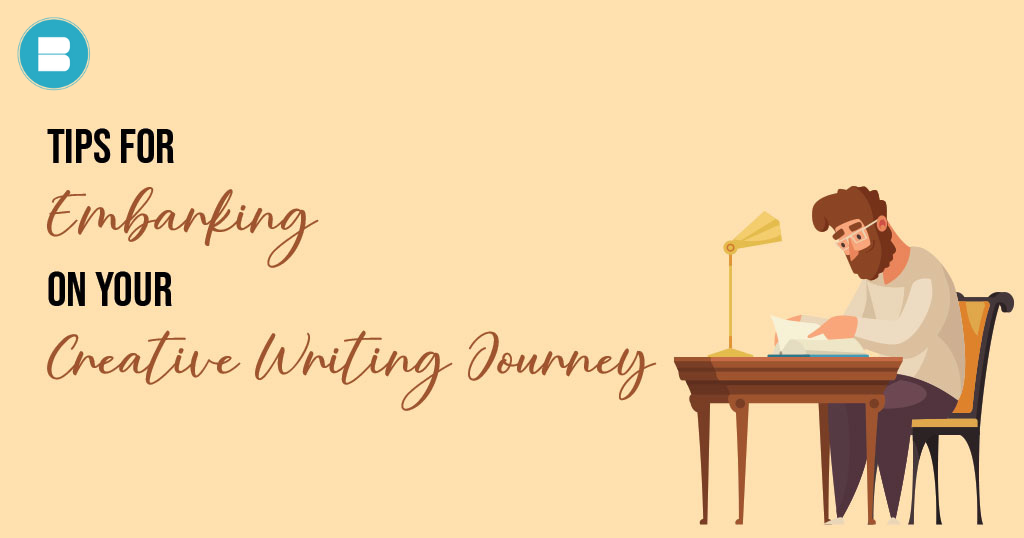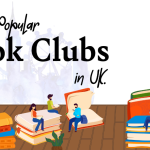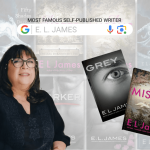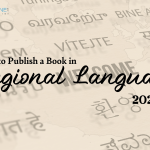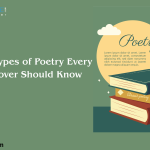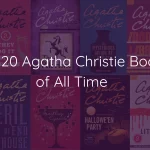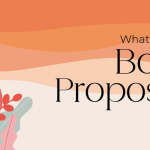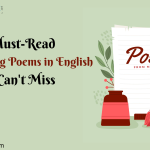Are you ready to dip your pen into the vast sea of creativity and unlock the realms of imagination? Creative writing, a form of self-expression that knows no bounds, invites you to craft worlds, characters, and emotions with the strokes of your words.
Read: Here’s a complete guide on how to write a book and get in published in India.
Whether you’re aiming to write captivating short stories, explore diverse writing styles, or enhance your content writing skills, these 10 tips will be your guiding stars as you embark on this exciting voyage of creative expression.
Here’s a list of some steps to keep in mind before starting with your creative writing journey:
- Embrace Your Passion
- Unleash Your Imagination
- Find Your Writing Style
- Start Small: Short Creative Writing Examples
- Begin with a Captivating Hook
- Develop Well-Rounded Characters
- Create Vivid Settings
- Craft compelling plots
- Revise and Refine
- Seek Inspiration and Feedback
- Embrace Your Passion: Passion is the driving force behind compelling creative writing. When you immerse yourself in topics that genuinely resonate with your interests and curiosity, your writing becomes a reflection of your authentic self. Choose subjects that evoke a sense of excitement or curiosity within you. Writing about what you’re passionate about allows you to infuse your work with genuine emotion and enthusiasm. This connection shines through your words, making your content relatable and engaging for readers. By embracing your passion, you tap into a wellspring of creativity that propels your writing to new heights.
- Unleash Your Imagination: Imagination is the magic wand that transforms ordinary words into captivating stories. Allow your imagination to roam freely, unburdened by the constraints of reality. Create vivid worlds, unique characters, and unexpected scenarios. As you delve into your imagination, you invite readers on a journey beyond the confines of their everyday lives. Embrace the whimsical and the extraordinary, inviting your creativity to flow without inhibition. By unleashing your imagination, you not only craft memorable narratives but also transport both yourself and your readers to realms where possibilities are endless.
- Find Your Writing Style: Your writing style is your signature on the page, shaping how readers experience your work. Experiment with various writing styles to discover the one that resonates with your voice and best suits your content. Descriptive writing paints lush imagery, while narrative writing weaves engaging stories. Persuasive writing influences opinions, and expository writing imparts information. Explore each style to see how it enhances your storytelling and effectively conveys your message. Once you find your writing style, it becomes a powerful tool to communicate your thoughts, emotions, and ideas. Your style becomes the lens through which readers perceive your creative universe, making your writing a distinct and memorable experience.
- Start Small: Short Creative Writing Examples: Embarking on your creative writing journey with short examples is an excellent way to build your skills. These compact narratives offer an opportunity to experiment with different themes, tones, and styles without the commitment of a longer piece. Short creative writing allows you to focus on concise storytelling, honing your ability to convey emotions and ideas effectively within a limited space. These bite-sized creations serve as stepping stones for improvement, enabling you to practise crafting engaging beginnings, immersive worlds, and satisfying conclusions. By starting small, you build the foundation of your creative writing expertise, fostering the confidence to tackle more extensive projects.
- Begin with a Captivating Hook: The power of a captivating hook lies in its ability to seize readers’ attention from the very first sentence. It’s the gateway into your narrative world, enticing readers to explore further. Crafting an intriguing hook involves presenting a question, a provocative statement, or a compelling scenario that ignites curiosity. It should encapsulate the essence of your story and offer a taste of the excitement or emotion to come. A well-executed hook not only entices readers but also sets the tone for the entire piece. It’s the spark that propels readers into the heart of your narrative, ensuring they are invested in the journey you’re about to take them on.
- Develop Well-Rounded Characters: Characters are the heart and soul of any story. Crafting well-rounded characters involves giving them depth, complexity, and relatability. Develop their personalities, desires, and fears, creating individuals who feel like real people with their own strengths and flaws. As characters navigate challenges and evolve, readers become emotionally invested in their journeys. Characters‘ motivations drive the plot forward, shaping the narrative’s twists and turns. Show their growth through interactions and decisions, allowing readers to connect and empathise. Well-developed characters resonate with readers on a profound level, fostering a connection that keeps them engaged and invested in the outcome of your story.
- Create Vivid Settings: Settings play a pivotal role in creative writing, serving as more than mere backdrops. They act as living, breathing entities that shape the tone, mood, and atmosphere of your story. Through descriptive language, transport your readers into the heart of your world. Engage their senses with rich imagery that allows them to feel the sun’s warmth, hear the rustling leaves, and smell the salty sea breeze. By immersing readers in the surroundings you’ve meticulously crafted, you enhance their emotional connection to the narrative. Vivid settings provide context, evoke emotions, and create a visual landscape that complements the characters and plot. Whether it’s a bustling city, a serene countryside, or a fantastical realm, the settings you create add depth and authenticity to your creative work.
- Craft compelling plots: A compelling plot is the driving force behind readers’ engagement. Weave a narrative that is dynamic and full of surprises. Develop a series of events that lead characters through challenges, growth, and transformation. Incorporate twists and turns that keep readers on their toes, eager to discover what happens next. Suspense, conflict, and resolutions add layers of depth to your story, generating emotional investment from your audience. As characters face obstacles and make choices, their journey should be filled with stakes and consequences. A well-crafted plot ensures that readers are hooked, wanting to accompany the characters on their quest for resolution. By blending character arcs with plot progression, you create a narrative that resonates long after the last page is turned.
- Revise and Refine: Revision is the art of refining your creative masterpiece. Your first draft is the raw material; revising transforms it into a polished gem. Meticulously review your work, focusing on every aspect, from sentence structure to dialogue authenticity. Examine pacing, ensuring that the narrative flows smoothly and maintains reader engagement. Each revision is an opportunity to enhance clarity, eliminate redundancies, and strengthen your storytelling. Consider feedback from trusted sources and apply the necessary adjustments. Through each iteration, your writing gains depth, cohesiveness, and resonance. Remember, revision is not a one-time process; it’s a journey of continuous improvement. Embrace the art of refining, knowing that with every revision, your creative work evolves into a true reflection of your vision and skill.
- Seek Inspiration and Feedback: Inspiration is the fuel that keeps the creative fire burning. It can be drawn from a myriad of sources, from observing everyday interactions to immersing yourself in literature, art, and the natural world. Pay attention to the subtleties of life, as even the smallest moments can spark imaginative ideas. A stroll through a park, a snippet of overheard conversation, or a thought-provoking article can all trigger creative insights. Cultivate a curious mindset and remain open to the world’s wonders, allowing them to infuse your writing with fresh perspectives. Equally essential is seeking feedback from others. Peers, mentors, and writing communities offer valuable viewpoints that can shed light on areas of improvement you might not have noticed. Constructive feedback provides a chance to refine your work, correct blind spots, and enhance your writing’s impact. It offers an opportunity for growth and an avenue to expand your skills. While it can be daunting to share your work, remember that feedback is an invaluable gift that guides you towards crafting more compelling narratives. By embracing both inspiration and feedback, you create a symbiotic relationship that nurtures your creative evolution and propels your writing to new heights.
The world of creative writing is a canvas awaiting your strokes of ingenuity. Whether you’re exploring the art of short stories, refining your writing style, or cultivating content writing skills, these tips will serve as guiding lights on your path to becoming a proficient and passionate writer. Unleash your imagination, embrace your unique voice, and allow the magic of creativity to illuminate your words as you embark on this fulfilling and enriching journey.
FAQs related to creative writing:
Creative writing is a captivating form of artistic expression that allows writers to craft narratives, poems, and stories that evoke emotions, spark imagination, and engage readers. The key to successful creative writing lies in the fusion of imagination, authenticity, and skillful execution. Creativity is the foundation, as it enables writers to generate unique ideas, perspectives, and worlds that resonate with readers. Imagination unlocks the door to originality, enabling writers to infuse their work with fresh concepts, characters, and settings.
Authenticity is equally vital, as it lends an honest and genuine voice to the writing. It involves drawing from personal experiences, emotions, and observations to create relatable and resonant content. Skillful execution involves the mastery of language, grammar, and narrative techniques to effectively convey ideas and evoke emotions. Crafting vivid descriptions, compelling characters, and engaging plots enhances the overall impact of the creative piece.
In essence, the key to creative writing lies in the harmonious integration of creativity, authenticity, and technical prowess. By tapping into their imaginative reservoirs, writers can craft narratives that leave lasting impressions on readers, making them feel, think, and dream.
Creative writing is a dynamic process that involves several stages to bring ideas to life effectively. The six steps in creative writing are:
- Idea Generation: This is the inception of the creative process. Writers brainstorm concepts, themes, and characters, often drawing inspiration from personal experiences, observations, or prompts.
- Planning and Outlining: Once an idea takes shape, writers create a rough outline that highlights the plot, characters, and key events. This provides a roadmap for the writing journey.
- Drafting: The drafting stage involves putting words to paper. Writers focus on getting their ideas down without overly scrutinising details or grammar. The goal is to let creativity flow freely.
- Revision: After the initial draft is complete, writers review and revise their work for clarity, coherence, and flow. This stage involves refining language, eliminating inconsistencies, and enhancing the narrative’s structure.
- Editing: Editing focuses on correcting grammar, punctuation, and spelling errors. It also involves fine-tuning sentence structure and word choice to enhance readability.
- Finalising and Publishing: The last step involves polishing the piece and preparing it for sharing with an audience. This could include submitting to literary journals, self-publishing, or sharing with friends and family.
These steps create a structured approach to creative writing, ensuring that ideas are translated into well-crafted, compelling narratives.
The “Three C’s” of creative writing encompass the core elements that contribute to the effectiveness and impact of a creative piece: character, conflict, and conclusion.
- Character: Characters are the heart of any story. They drive the narrative, engage readers emotionally, and provide relatable entry points into the story’s world. Well-developed characters possess unique traits, motivations, and arcs that add depth and authenticity to the story.
- Conflict: Conflict is the engine that propels the plot forward. It creates tension, challenges characters, and introduces obstacles they must overcome. The resolution of conflict forms the backbone of the story’s progression and keeps readers invested in the outcome.
- Conclusion: The conclusion provides closure to the narrative, resolving conflicts and character arcs. It leaves readers with a sense of fulfilment and satisfaction, ensuring that the story’s themes and messages resonate.
Balancing these three elements is crucial for crafting a compelling and resonant creative piece that captures readers’ attention and imagination.
Creative writing encompasses a range of forms that allow writers to express themselves artistically. The four primary forms of creative writing are:
- Fiction: Fiction involves crafting imaginary narratives and characters. This form includes short stories, novels, novellas, and flash fiction, enabling writers to explore diverse genres, themes, and emotions.
- Poetry: Poetry is characterised by its focus on language, rhythm, and imagery. Poems use metaphor, rhyme, and wordplay to convey emotions, thoughts, and experiences in condensed and evocative forms.
- Creative Nonfiction: Creative nonfiction merges factual events with artistic expression. It includes personal essays, memoirs, and autobiographies, allowing writers to narrate real-life experiences using storytelling techniques.
- Drama and Playwriting: Drama involves crafting scripts for theatre, film, or television. Playwriting creates dialogue-driven narratives that explore themes, conflicts, and character interactions through performance.
Each form offers distinct opportunities for writers to experiment with language, structure, and storytelling techniques, fostering diverse modes of creative expression.
Creativity is the capacity to generate novel, original ideas and solutions through the synthesis of existing concepts, experiences, and insights. It involves the ability to break away from conventional thinking and explore new territories of thought. The key features of creativity include:
- Originality: Creativity involves producing ideas that are fresh, innovative, and distinct from what has been done before.
- Combination: Creativity often emerges from combining seemingly unrelated elements to create something new and unexpected.
- Flexibility: Creative individuals possess the ability to adapt their thinking and perspectives, embracing multiple viewpoints and approaches.
- Problem-Solving: Creativity is a powerful tool for solving complex problems by approaching them from unique angles and devising innovative solutions.
- Risk-Taking: Creativity requires stepping outside one’s comfort zone and embracing uncertainty to explore new territories of thought.
- Imagination: A vibrant imagination fuels creative thinking, allowing individuals to envision possibilities beyond immediate reality.
Fostering these key features of creativity enhances one’s capacity to generate imaginative ideas and bring them to fruition through creative writing.
Creative writing serves several fundamental purposes that enrich human experience and communication:
- Entertainment: Creative writing entertains readers by immersing them in imaginative worlds, introducing captivating characters, and taking them on emotional journeys.
- Expression: Creative writing offers a medium for individuals to express their thoughts, feelings, and experiences in ways that transcend straightforward communication.
- Exploration: Creative writing enables exploration of complex themes, perspectives, and scenarios, fostering a deeper understanding of human nature, society, and the world.
Through these purposes, creative writing serves as a means of connection, catharsis, and exploration, enriching both writers and readers.
Improving creative writing skills is an ongoing journey that involves practise, learning, and self-discovery. Here are some effective strategies to enhance your creative writing abilities:
- Read Widely: Immerse yourself in a diverse range of literature to expand your exposure to different writing styles, voices, and genres.
- Write regularly. Consistent practise is essential for improvement. Set aside dedicated time each day or week to write creatively.
- Experiment with Prompts: Writing prompts can spark fresh ideas and encourage you to explore topics or perspectives you might not have considered.
- Revise and edit: After drafting, take time to revise and edit your work. This helps refine your writing, enhance clarity, and strengthen the narrative.
- Seek feedback: Share your work with trusted peers, mentors, or writing groups. Constructive feedback can provide valuable insights for improvement.
- Study Craft: Read books, take courses, and study the craft of writing. Learning about narrative structure, character development, and other techniques can elevate your writing.
- Practise observation: sharpen your observational skills by paying attention to details in your surroundings, emotions, and interactions. This enriches your writing with authenticity.
- Embrace Feedback: Be open to feedback and criticism. Use constructive input to refine your writing and develop a growth mindset.
- Step Out of Your Comfort Zone: Experiment with different genres, styles, and themes to challenge yourself creatively.
- Stay Curious: Cultivate curiosity about the world around you. Curiosity fuels creativity by encouraging you to explore new ideas and perspectives.
Improving creative writing skills requires dedication, patience, and a willingness to learn and grow. Embrace the journey, celebrate your progress, and continue honing your craft to become a more skilled and expressive writer.

